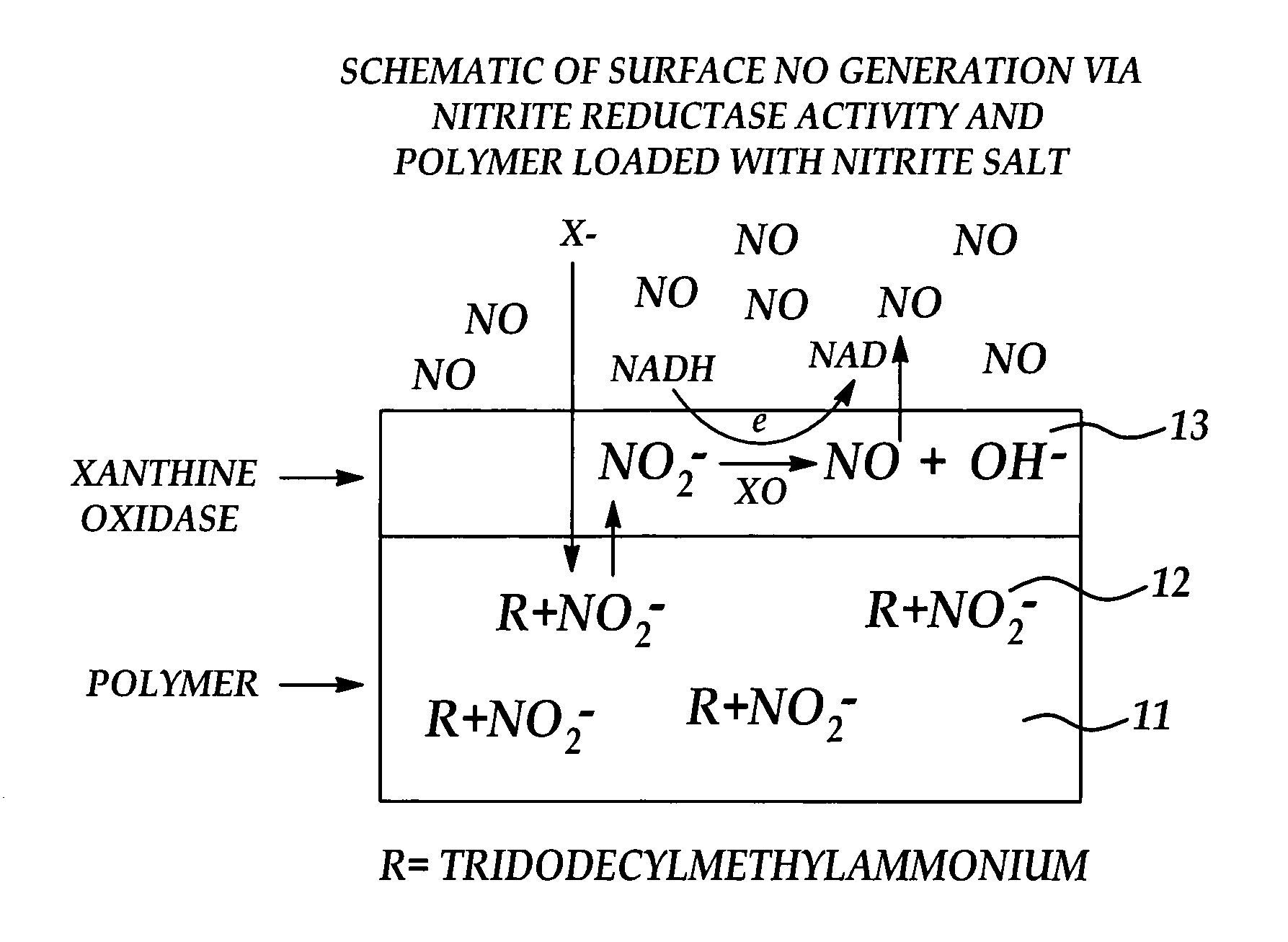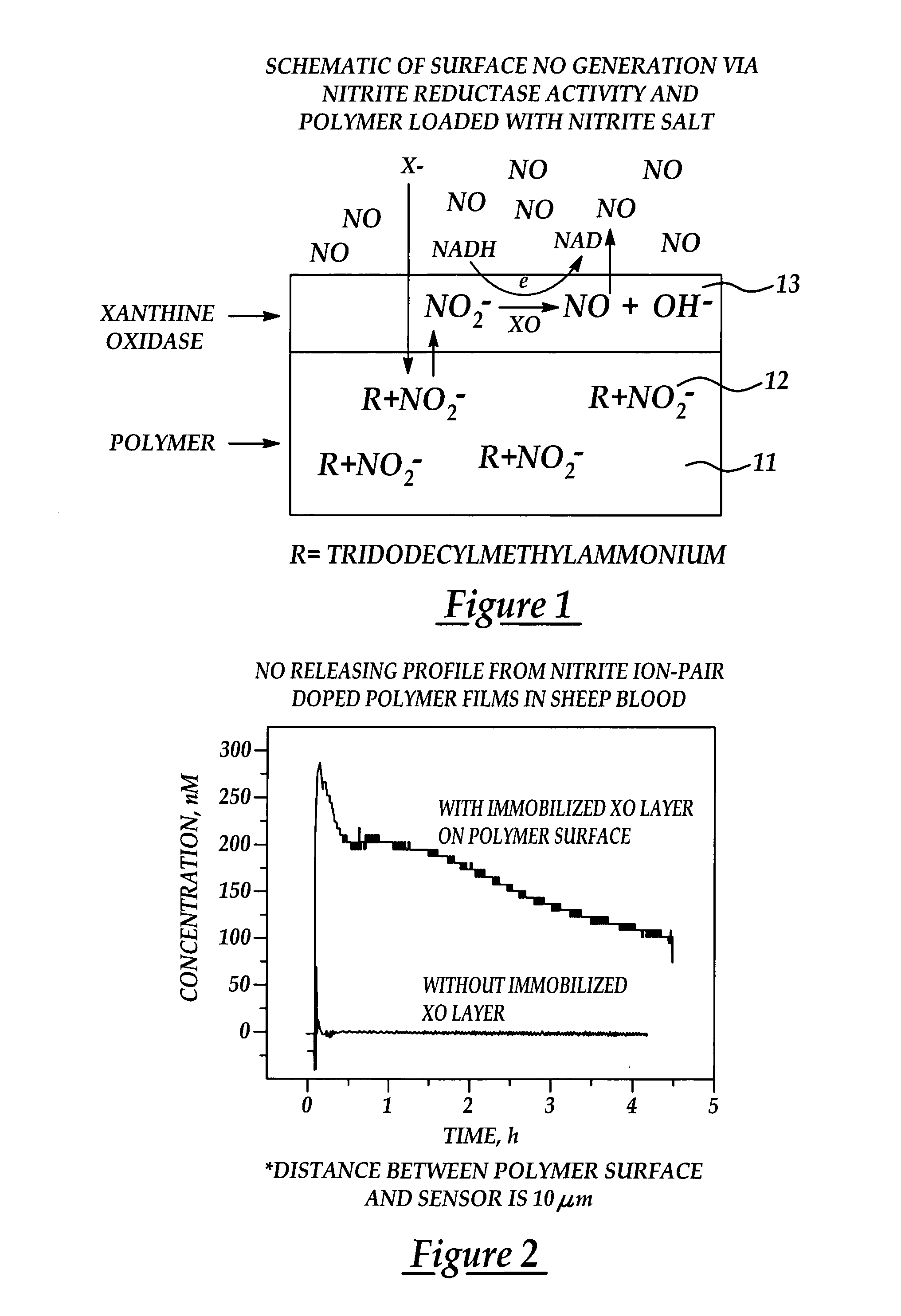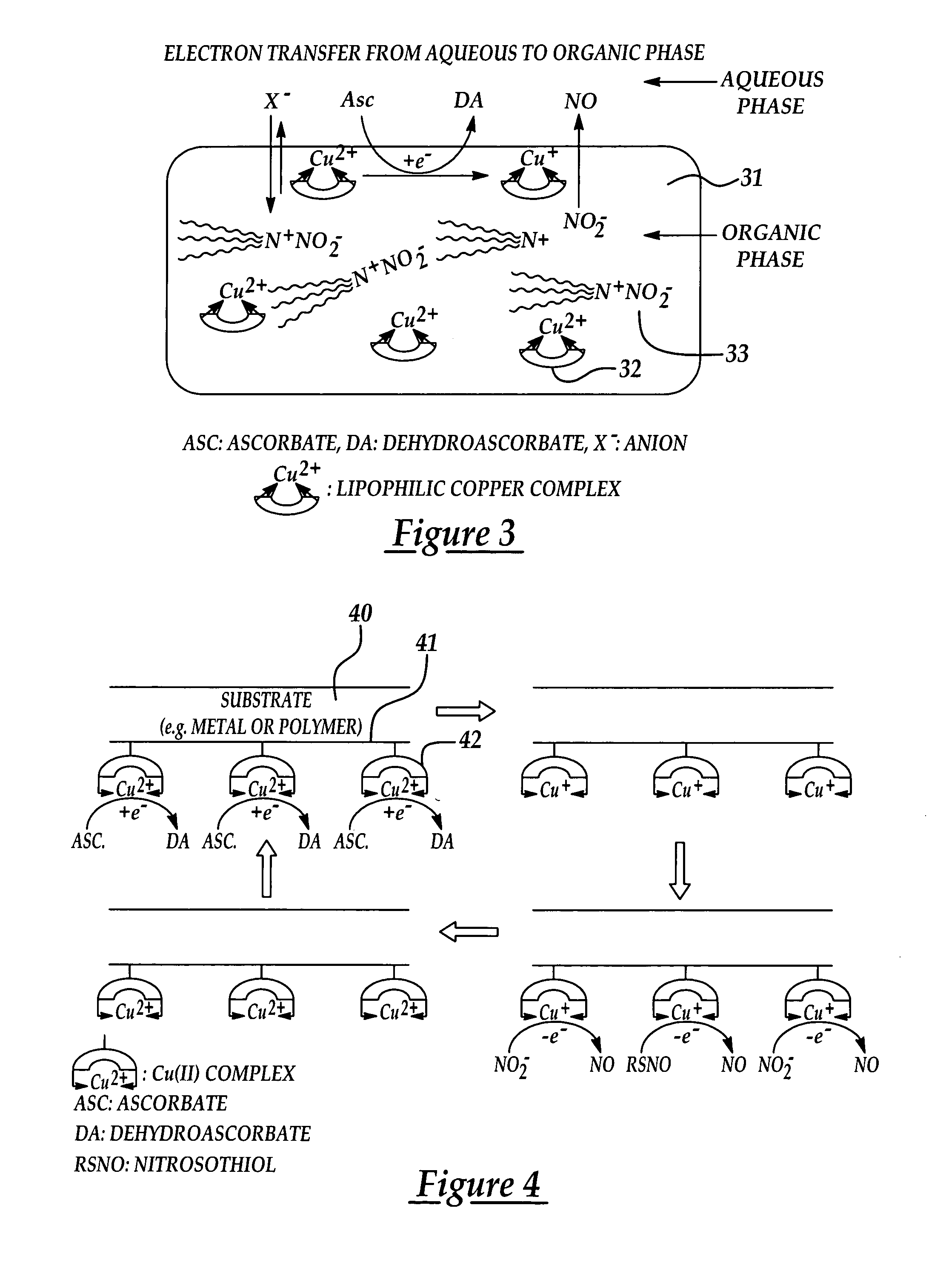Material containing metal ion ligand complex producing nitric oxide in contact with blood
a technology of metal ion ligand and metal ion ligand, which is applied in the direction of metal/metal-oxide/metal-hydroxide catalyst, on/in inorganic carrier, prosthesis, etc., can solve the problems of thrombosis, affecting and requiring stringent storage conditions. to achieve the effect of enhancing the biocompatibility of materials
- Summary
- Abstract
- Description
- Claims
- Application Information
AI Technical Summary
Benefits of technology
Problems solved by technology
Method used
Image
Examples
Embodiment Construction
[0035]In one embodiment of the method for making an improved NO-releasing polymer, the desired polymer may be swelled in an organic solution containing the lipophilic nitrite / nitrate salt. In other embodiments, the salt can be added during the processing stage when the desired end product is molded or cast from the native polymer material. In still other embodiments, the surface of the polymer material that will be exposed to blood (non-limitative examples of which include the outside surface of a catheter, the inner surface of tubing of the type used in extracorporeal circuits, or the surface of metal stents) may be coated, either by dip-coating or by another method, with a biocatalyst (enzyme) or biomimetic catalyst capable of reducing nitrate, nitrite, or nitrosothiols to NO. The biocatalysts or biomimetic catalysts can also be covalently tethered to the surface of the material.
[0036]FIG. 1 illustrates a specific embodiment of the material of the present invention. Mammalian xant...
PUM
| Property | Measurement | Unit |
|---|---|---|
| thickness | aaaaa | aaaaa |
| pore size | aaaaa | aaaaa |
| porosity | aaaaa | aaaaa |
Abstract
Description
Claims
Application Information
 Login to View More
Login to View More - R&D
- Intellectual Property
- Life Sciences
- Materials
- Tech Scout
- Unparalleled Data Quality
- Higher Quality Content
- 60% Fewer Hallucinations
Browse by: Latest US Patents, China's latest patents, Technical Efficacy Thesaurus, Application Domain, Technology Topic, Popular Technical Reports.
© 2025 PatSnap. All rights reserved.Legal|Privacy policy|Modern Slavery Act Transparency Statement|Sitemap|About US| Contact US: help@patsnap.com



